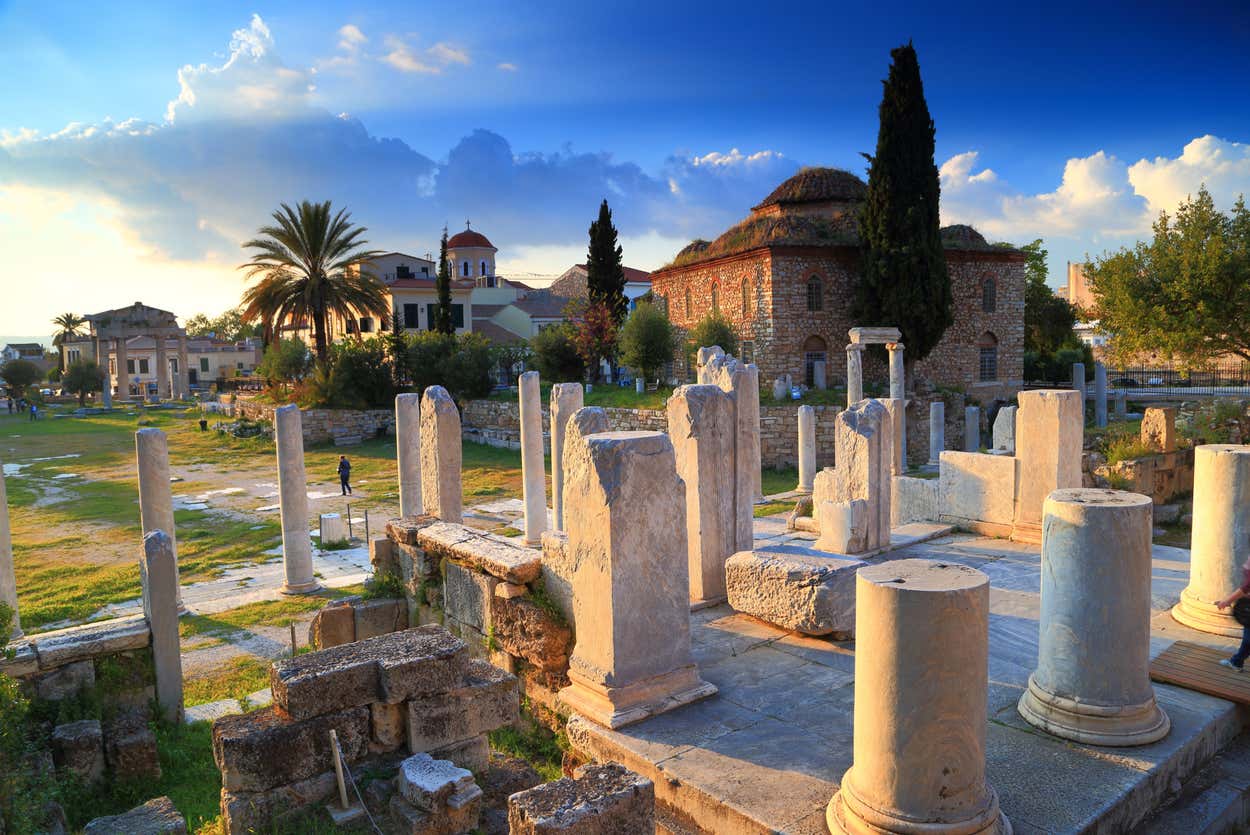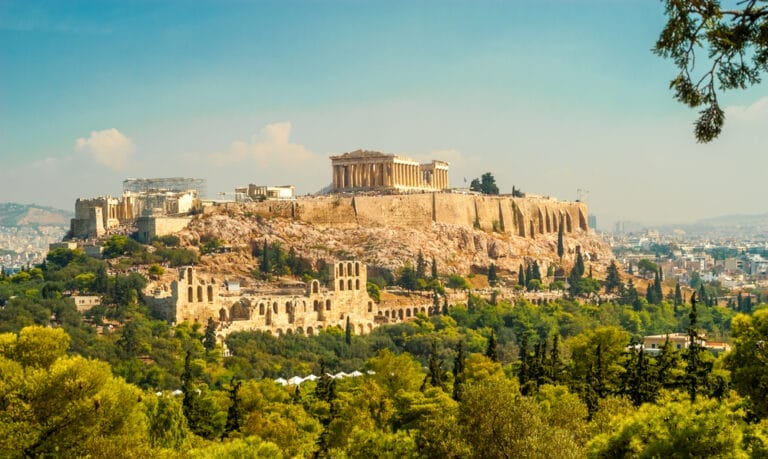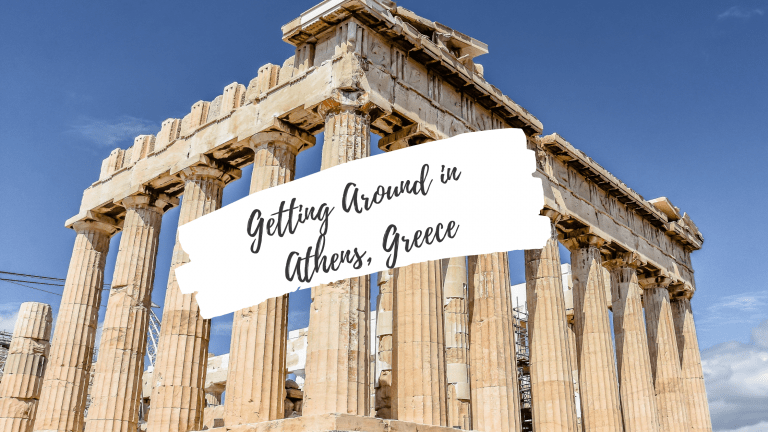The Top 21 Tourist Attractions in Athens, Greece
Athens, Greece, is a city with a rich history and culture. It is home to some of the most iconic landmarks in the world, including the Acropolis, the Parthenon, and the Temple of Olympian Zeus. Athens also offers a vibrant and lively atmosphere, with bustling markets, charming neighbourhoods, and delicious cuisine.
If you are planning a trip to Athens, you are in for a treat. There are many tourist attractions to choose from, each offering its own unique experience. Here is a brief overview of some of the most popular tourist attractions in Athens:
1. The Acropolis: A Must-See Destination in Athens
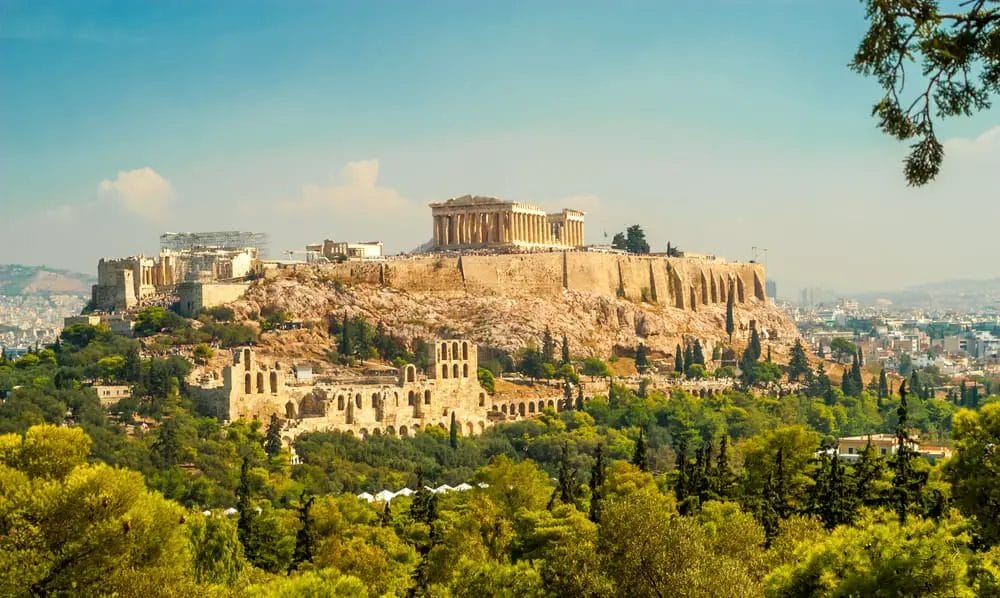
Get ready for an adventure! The Acropolis in Athens is the city’s most famous landmark. A must-see for any visitor! But that’s not all; there’s a whole world to uncover.
Perched high on a hill, the Acropolis is a collection of ancient ruins that trace back to 5th-century BC. Among them, you’ll find the incredible Parthenon, the enchanting Erechtheion, and the remarkable Propylaea. It’s like stepping into a time machine.
The story of the Acropolis goes way back. In ancient times, it was the heart of religious and cultural life in Athens, a symbol of power and prestige. Over time, it’s been through a lot – wars, earthquakes, and looting. But the surprise is that it’s been restored and preserved, still standing tall in all its former glory.
When you explore the Acropolis, there’s more than meets the eye. The most famous gem in the crown? The Parthenon. It’s like an architectural marvel from ancient Greece. Built as a temple for the goddess Athena, the city’s patron deity, it’s famous for its impressive Doric columns and intricate sculptures. But this is just the beginning of the journey.
2. The Parthenon: A Symbol of Ancient Greek Civilization

Prepare to be captivated by the iconic Parthenon in Athens, a symbol of ancient Greek civilization. This temple, constructed in the 5th century BC, is a tribute to Athena, the city’s patron goddess. But there’s much more to this masterpiece!
Dive into history, where the Parthenon’s roots are intertwined with the tale of Athens. It emerged during the Golden Age, an era of astounding cultural and intellectual achievement. Renowned architect Phidias crafted its design, and the temple’s ethereal beauty arose from the marble of Mount Pentelicus.
This isn’t just a temple; it’s a key player in Greek history. It served as a treasury, a testament to Athenian might, and a spiritual haven. The sculptures adorning it are like a glimpse into Greek mythology, immortalizing the Athenians’ triumphs. But the story doesn’t end here!
3. The National Archaeological Museum: A Treasure Trove of Greek Artifacts
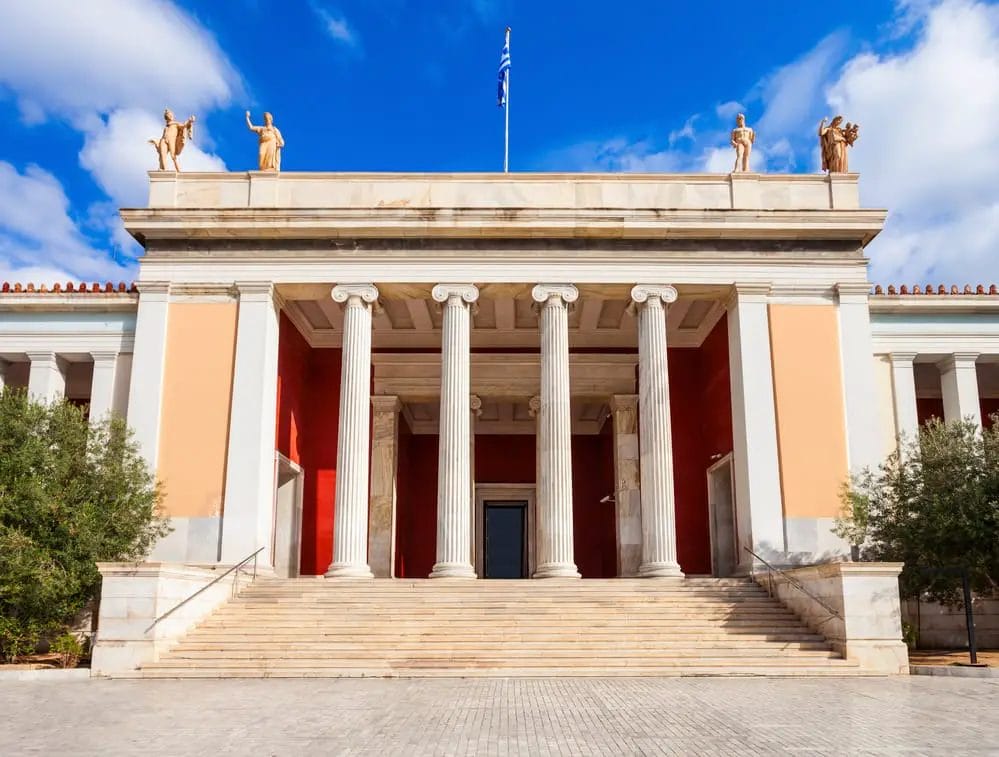
Calling all history enthusiasts! The National Archaeological Museum in Athens is an absolute must-visit. It’s not just any museum; it’s a colossal treasure trove, one of the world’s largest and most significant archaeological museums. Get ready for an adventure into the depths of ancient Greece.
The museum’s collection is a journey through time, spanning over 5,000 years of Greek history. From the prehistoric era to the Roman period, you’ll find an astonishing array of artifacts. Sculptures, pottery, jewelry, and more await, offering a rare glimpse into the daily life, art, and culture of this remarkable civilization.
Hold your breath for the highlights! The Mask of Agamemnon, a glistening gold death mask believed to belong to the legendary king of Mycenae, is a true gem.
There’s also the Antikythera Mechanism, an ancient analogue computer used to predict celestial positions and eclipses. And don’t miss the Bronze Statue of Poseidon, a testament to ancient Greek sculpture’s grandeur.
4. The Ancient Agora: A Center of Athenian Life and Politics
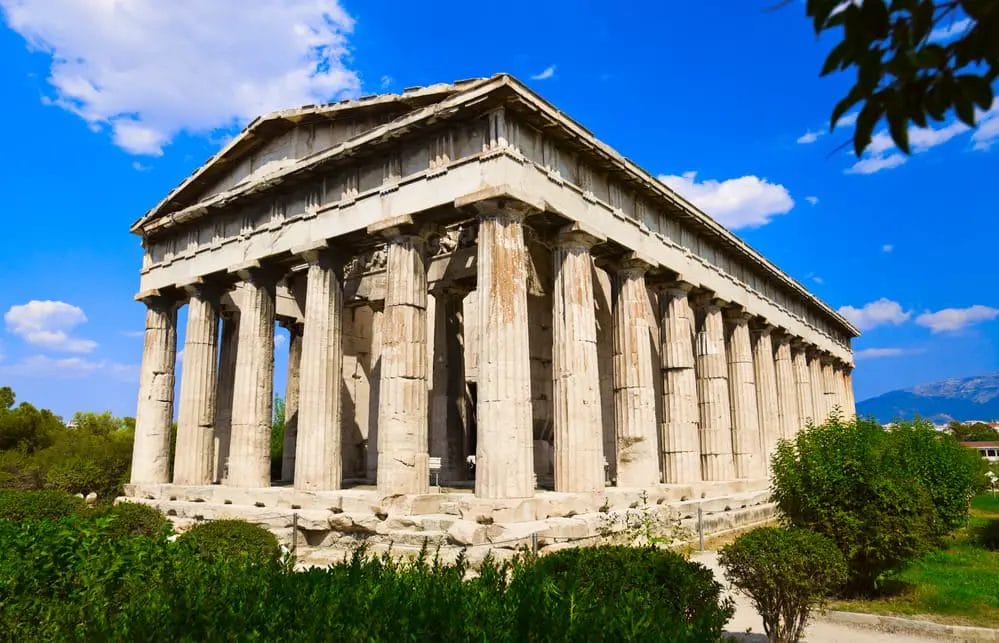
Prepare to step into the heart of ancient Athens, the Ancient Agora. It’s a top-tier destination that takes you back in time, where the pulse of the city’s political, commercial, and social life once throbbed. A bustling marketplace, a stage for political discourse, and the cradle of democracy – it’s all right here!
The journey begins in the 6th century BC when the Ancient Agora was born as a public space. Through the ages, it swelled in significance, evolving into the epicenter of Athenian democracy. It’s a place that witnessed the dreams and debates of the citizens.
Key landmarks include the Stoa of Attalos, the remarkable Temple of Hephaestus, and the crucial Bouleuterion. To make the most of your visit, consider prebooking your attraction ticket to skip the lines and dive straight into the experience.
As you explore the Ancient Agora, keep your eyes peeled for these gems. The reconstructed Stoa of Attalos now doubles as a museum, showcasing precious artefacts from the Agora.
The Temple of Hephaestus is a testament to Greece’s ancient architectural mastery and offers breathtaking views of the surroundings. Last but not least, the Bouleuterion, the Athenian Council’s meeting ground, holds the key to understanding the democratic workings of ancient Athens. The adventure has just begun!
5. The Temple of Olympian Zeus: A Monument to the King of the Gods
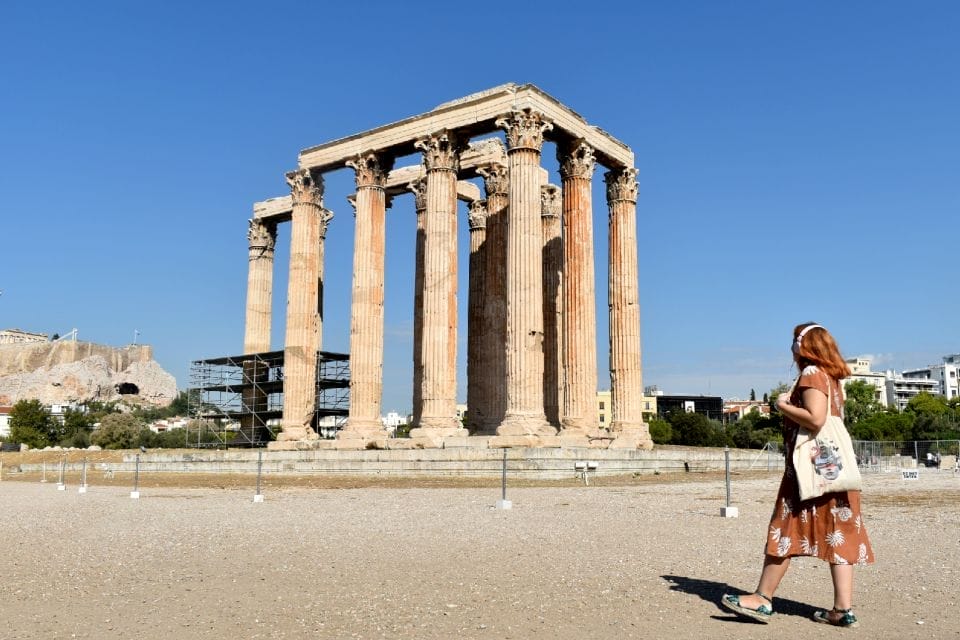
Get ready to stand in awe of the Temple of Olympian Zeus, one of Greece’s grandest ancient temples. This monumental structure, dedicated to Zeus, the king of the Greek gods, is nestled in the heart of Athens, and it’s an essential stop for any city explorer.
This tale takes us all the way back to the 6th century BC when the ambitious Athenian tyrant, Peisistratos, first commissioned the temple. But here’s the twist: it took several centuries, not until the 2nd century AD, during the reign of Roman Emperor Hadrian, for its construction to reach completion.
Travel Insurance
Don’t forget travel insurance for your Europe trip! Heymondo covers medical emergencies, theft, delay, cancellation, lost luggage and more with 24/7 worldwide assistance and medical chat. As a Chasing Whereabouts reader, we’ve got you 5% off! Check Heymondo Here
As you set foot in this temple’s presence, you’ll be struck by its astonishing architecture. The towering columns, soaring up to a staggering 17 meters in height, leave you breathless.
Originally, there were a whopping 104 columns, but today, only 15 stand tall. Yet, even in its incomplete state, the temple remains a magnificent testament to the grandeur of ancient Greek architecture.
The Temple of Olympian Zeus played an important role in Greek mythology. It was believed to be the dwelling place of Zeus and was a site of religious worship and festivals. The temple also served as a symbol of power and prestige for the Athenians, showcasing their wealth and influence.
6. The Panathenaic Stadium: A Historic Venue for Athletic Events

The Panathenaic Stadium is a historic venue for athletic events and is a must-visit destination for sports enthusiasts. It is located in the heart of Athens and is one of the oldest stadiums in the world.
The history of the Panathenaic Stadium dates back to ancient times when it was first built in the 4th century BC. It was originally used for the Panathenaic Games, a festival held in honor of the goddess Athena. The stadium was later renovated and expanded by the Roman Emperor Herodes Atticus in the 2nd century AD.
The Panathenaic Stadium is known for its distinctive horseshoe shape and its white marble seating. It can seat up to 50,000 spectators and offers stunning views of the surrounding area. The stadium has hosted several important events throughout history, including the first modern Olympic Games in 1896.
When visiting the Panathenaic Stadium, there are several key sites to see. The stadium itself is a marvel of ancient engineering and offers a glimpse into the athletic traditions of ancient Greece. The Olympic Museum, located within the stadium, showcases artifacts and memorabilia from the history of the Olympic Games.
7. The Plaka: A Picturesque Neighborhood with Traditional Greek Architecture

Get ready to explore a slice of Greek paradise, the Plaka, a charming neighborhood in Athens known for its traditional Greek architecture and captivating ambiance. Nestled at the foot of the Acropolis, it’s one of the city’s oldest and most picturesque areas.
The Plaka’s history stretches back to ancient times when it was the posh residence of Athens’ aristocracy. Through the centuries, it absorbed the influences of various cultures and civilizations, from the Romans and Byzantines to the Ottomans.
Today, it’s a sought-after destination for tourists, offering narrow cobblestone streets, vibrant houses, and delightful shops and cafes.
8. The Monastiraki Flea Market: A Shopper’s Paradise for Souvenirs and Antiques

The Monastiraki Flea Market is a shopper’s paradise for souvenirs and antiques and is a must-visit destination for any visitor to Athens. It is located in the Monastiraki neighborhood, near the Ancient Agora, and is one of the oldest and largest flea markets in the city.
The market is a bustling and vibrant place, with hundreds of stalls selling a wide variety of goods. Visitors can find everything from clothing and accessories to jewelry, artwork, and antiques. The market is also a great place to sample traditional Greek street food, such as souvlaki and loukoumades.
When shopping at the Monastiraki Flea Market, there are several tips to keep in mind. Bargaining is a common practice, so be prepared to negotiate prices with the vendors. It is also a good idea to arrive early in the morning when the market is less crowded and the best items are still available. Finally, be sure to bring cash, as many vendors do not accept credit cards.
And here’s an insider’s tip: If you’re looking for a convenient way to explore the city without the burden of luggage, Athens offers a range of luggage drop services. Store your bags securely, so you can move about the city freely, unencumbered by your belongings. Athens has thought of everything to make your journey as seamless as possible. Your adventure begins here!
9. The Lycabettus Hill: A Panoramic View of Athens from Above

Prepare to soar above the city at Lycabettus Hill, the tallest peak in Athens that offers a breathtaking bird’s-eye view of the entire city. This is a must-visit for anyone looking to take in the awe-inspiring beauty of Athens from a whole new perspective.
Found in the Kolonaki neighborhood, Lycabettus Hill is accessible via a thrilling funicular railway or by conquering a steep, rewarding path. At the summit, you’ll discover a quaint chapel dedicated to Saint George, along with a cozy restaurant and café for refreshments.
The view from Lycabettus Hill is nothing short of breathtaking, especially during the golden embrace of a sunset. Gaze out over the city, where the Acropolis, the Parthenon, and other iconic landmarks unveil themselves, all while the sprawling cityscape of Athens stretches before you.
For an uninterrupted experience, consider prebooking your tickets, ensuring a seamless journey to this elevated paradise. Your adventure begins here!
10. The National Garden: A Green Oasis in the Heart of Athens
The National Garden is a green oasis in the heart of Athens and is a must-visit destination for nature lovers. It is located behind the Greek Parliament and is one of the largest public parks in the city.
The history of the National Garden dates back to the 19th century when it was first established as a royal garden. Over the years, it has been expanded and transformed into a public park that is open to all visitors.
The National Garden is home to a wide variety of plants and trees, as well as several ponds, fountains, and statues. It offers a peaceful and tranquil escape from the hustle and bustle of the city and is a great place for a leisurely stroll or a picnic.
When visiting the National Garden, there are several key sites to see. The Zappeion, a neoclassical building located within the park, is a popular venue for exhibitions and events. The Botanical Museum, located near the entrance of the garden, showcases a collection of plants and flowers from all over Greece.
11. The Cape Sounion: A Scenic Drive to the Temple of Poseidon on the Aegean Sea
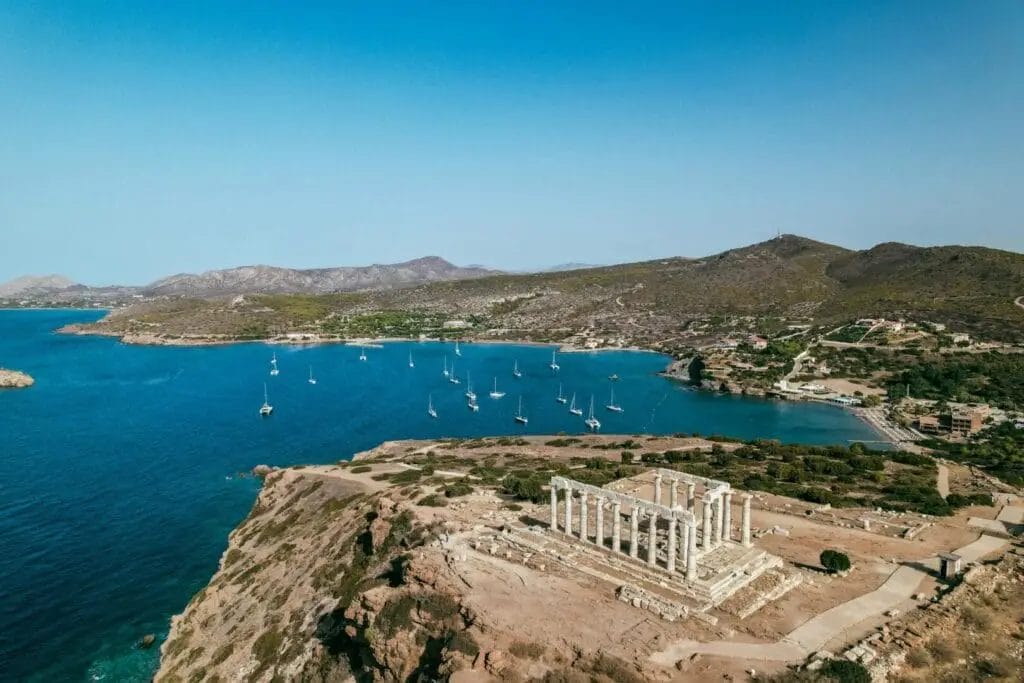
Embark on a breathtaking journey from Athens to Cape Sounion, where the Temple of Poseidon reigns majestically over the Aegean Sea. This is an absolute must for anyone craving the beauty of the Greek coastline.
Located around 70 kilometres southeast of Athens, Cape Sounion is accessible by car or through organized tours, both offering a scenic coastal drive. Along the way, you’ll be treated to mesmerizing views of the sea and the surrounding landscape.
The Temple of Poseidon, perched on a cliff with an unrivalled view of the Aegean Sea, gifts visitors with awe-inspiring sunset views. Built in the 5th century BC as a sanctuary for Poseidon, the god of the sea, this temple is known for its magnificent Doric columns and its commanding position on the cape.
As you explore Cape Sounion, the Temple of Poseidon takes centre stage, but there are more historical treasures to discover. The area hosts several other ancient ruins, including the Temple of Athena Sounias and the Sanctuary of Artemis.
Beyond history, the cape is a popular spot for swimming and sunbathing, with pristine beaches just a stone’s throw away. To make the most of your journey, consider pre-booking your tickets, ensuring a smooth ride to this coastal marvel.
12. Visit Benaki Museum
The Benaki Museum is one of the largest and most important museums in Greece. It houses a vast collection of artifacts from Greek culture, including art, furniture, textiles, and ceramics. The museum is located in a beautiful 19th-century building in the Plaka neighbourhood.
13. Byzantine and Christian Museum
The Byzantine and Christian Museum is home to a collection of Byzantine and Christian art and artifacts from Greece and the surrounding region. The museum’s collection includes mosaics, icons, sculptures, and textiles. The museum is located in a former mosque in the Plaka neighborhood.
14. War Museum of Athens
The War Museum of Athens tells the story of Greece’s military history from ancient times to the present day. The museum’s collection includes weapons, uniforms, vehicles, and other artifacts. The museum is located in a former military camp on the outskirts of Athens.
15. Jewish Museum of Greece
The Jewish Museum of Greece tells the story of the Jewish community in Greece. The museum’s collection includes artifacts from Jewish life in Greece, such as religious objects, household items, and photographs. The museum is located in the Plaka neighborhood.
16. Technopolis
Technopolis is a former gas factory that has been converted into a cultural center. It hosts a variety of events, including concerts, exhibitions, and festivals. Technopolis is located in the Gazi District.
Quick Tip: Wondering weather you should buy the Athens Pass or not then you can read our in-depth review of the Athens pass.
17. Gazi District
The Gazi District is a former industrial area that has been transformed into a trendy neighborhood with bars, clubs, and restaurants. It is also home to a number of historical sites, including the Technopolis cultural center and the old gasworks.
18. Anafiotika
Anafiotika is a charming neighborhood located on the slopes of the Acropolis. It is known for its narrow streets, whitewashed houses, and stunning views of the Acropolis.
19. Syntagma Square
Syntagma Square is the main square in Athens. It is home to the Greek Parliament Building and the Tomb of the Unknown Soldier. It is also a popular spot for protests and demonstrations.
20. Head to the Museum of Illusion on Rainy Day in Athens
Museum Of Illusions Athens: Step into a world where perception is tested, and reality is questioned. This captivating museum offers a mind-bending experience filled with optical illusions, puzzles, and interactive exhibits.
Get ready to challenge your senses and see the world in a whole new light. Don’t forget to consider prebooking your tickets for a hassle-free adventure in the world of illusions!
Conclusion: Tourist Attractions in Athens
For history and culture enthusiasts, Athens, Greece is an absolute must-visit. This city is a treasure trove of iconic landmarks that rank among the world’s finest, including the legendary Acropolis and the Parthenon. These ancient ruins stand as living witnesses to the city’s rich past, offering a window into the grandeur of ancient Greek civilization.
But that’s just the beginning. Athens isn’t just a city of history; it’s a city of life. The atmosphere is vibrant, with bustling markets, charming neighborhoods, and delectable cuisine. As you roam the streets, you’ll encounter the heart and soul of Greece.
Athens also boasts a lineup of world-class museums, with the National Archaeological Museum leading the pack. Here, a vast collection of Greek artifacts awaits, ready to transport you through the annals of history. To ensure you make the most of your visit, consider prebooking your tickets, avoiding any waiting and diving straight into the cultural wonders of Athens. Your adventure begins here!
Frequently Asked Questions (FAQ)
- What is the best time to visit Athens?
The best time to visit Athens is during the spring (April to June) and fall (September to October) when the weather is pleasant and the tourist crowds are smaller. The average temperature during these months ranges from 15°C (59°F) to 25°C (77°F), making it ideal for exploring the city’s outdoor attractions. Additionally, visiting during these shoulder seasons allows you to avoid the scorching heat of summer and the chilly winters.
- How can I get around Athens easily?
Athens has a well-developed public transportation system that makes getting around the city easy and convenient. Here are some options:
- Metro: The Athens Metro is a reliable and efficient way to travel within the city. It connects major tourist attractions, neighbourhoods, and the airport. The metro operates from 5:30 am to midnight on weekdays and until 2 am on weekends.
- Buses: Athens has an extensive bus network that covers the entire city. Buses operate from early morning until midnight, and some routes offer 24-hour service. It’s advisable to check the bus schedules and routes in advance.
- Trams: The tram system is another convenient mode of transportation, especially for reaching coastal areas like Glyfada and Voula. Trams operate from early morning until midnight.
- Taxis: Taxis are widely available in Athens, and they can be hailed on the street or found at designated taxi stands. Make sure the taxi has a working meter, and it’s always a good idea to ask for an estimated fare before starting the journey.
- Are there any day trips from Athens worth considering?
Athens serves as an excellent base for exploring the surrounding areas, and there are several day trips that are worth considering. Here are a few popular options:
| Day Trip | Distance from Athens | Highlights |
|---|---|---|
| Delphi | Approximately 180 km (112 miles) | Ancient ruins, Temple of Apollo, Delphi Archaeological Museum |
| Meteora | Approximately 350 km (217 miles) | Monasteries perched on towering rock formations, breathtaking views |
| Aegina | Approximately 27 km (17 miles) by ferry | Beautiful beaches, Temple of Aphaia, pistachio orchards |
Delphi: Located about 180 km (112 miles) northwest of Athens, Delphi is an ancient archaeological site that was once considered the center of the world in Greek mythology. Visitors can explore the ruins of the Temple of Apollo, the Delphi Theatre, and the Delphi Archaeological Museum, which houses a collection of artifacts from the site.
Meteora: Situated approximately 350 km (217 miles) northwest of Athens, Meteora is a unique UNESCO World Heritage Site known for its monasteries perched atop towering rock formations. The stunning natural landscape and the spiritual atmosphere of the monasteries make it a must-visit destination.
Aegina: Aegina is a picturesque island located just a short ferry ride away from Athens. Known for its beautiful beaches, charming villages, and pistachio orchards, Aegina offers a relaxing escape from the city. Visitors can explore the Temple of Aphaia, enjoy water sports, or simply unwind by the crystal-clear waters.
These are just a few examples of the many day trips available from Athens. Whether you’re interested in history, nature, or island hopping, there is a day trip that suits your preferences.
- Can you recommend any local dishes to try in Athens?
Athens is a food lover’s paradise, offering a wide range of delicious dishes that showcase the flavors of Greek cuisine. Here are some local dishes that you must try:
- Moussaka: A classic Greek dish made with layers of eggplant, minced meat (usually beef or lamb), and béchamel sauce. It’s a hearty and flavorful dish that is often considered a comfort food.
- Souvlaki: Grilled meat skewers, typically made with pork, chicken, or lamb. Souvlaki is often served with pita bread, tzatziki sauce, and a side of Greek salad. It’s a popular street food option and a must-try for meat lovers.
- Spanakopita: A savory pastry filled with spinach, feta cheese, onions, and herbs. Spanakopita is a delicious vegetarian option that can be enjoyed as a snack or as part of a meal.
- Greek Salad: A refreshing and healthy salad made with fresh tomatoes, cucumbers, onions, olives, and feta cheese. It’s typically dressed with olive oil and a sprinkle of oregano. Greek salad is a staple in Greek cuisine and pairs well with many dishes.
- Are there any specific dress codes to keep in mind when visiting religious sites in Athens?
When visiting religious sites in Athens, it’s important to dress modestly out of respect for the religious and cultural traditions. Here are some guidelines to keep in mind:
- Both men and women should avoid wearing shorts, sleeveless tops, or revealing clothing when visiting churches, monasteries, or other religious sites.
- It’s recommended to wear clothing that covers the shoulders and knees. For women, a shawl or scarf can be used to cover the shoulders if necessary.
- Comfortable shoes are advisable as there may be uneven surfaces and stairs to climb.
- It’s also important to maintain a respectful demeanor and avoid loud conversations or disruptive behavior.

